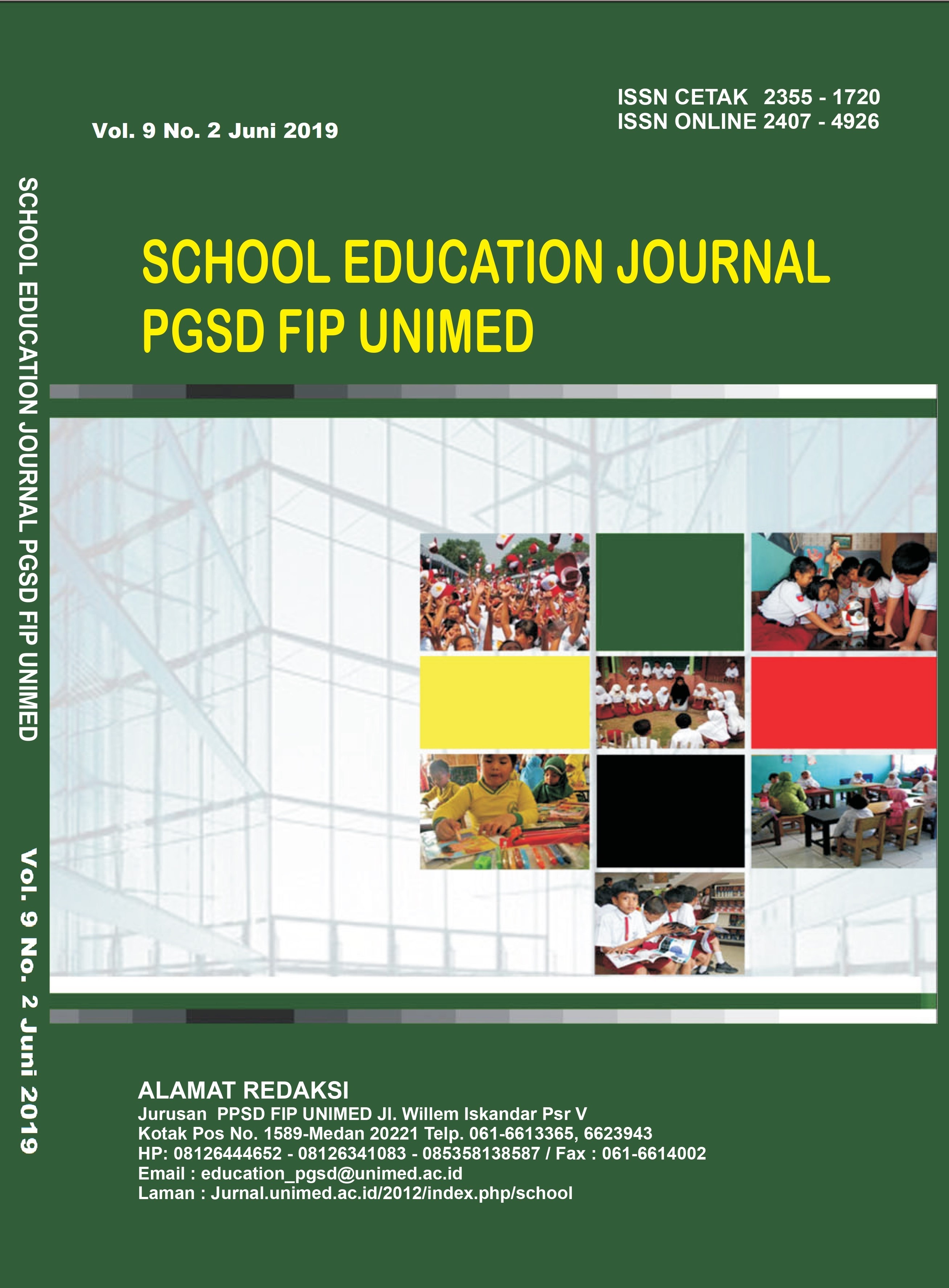UPAYA MENINGKATKAN HAFALAN QS.AL-FATIHAH SISWA/I MELALUI STRATEGI PEMBELAJARAN AUDIO VISUAL PADA KELAS I SD NEGERI 106162 MEDAN ESTATE
DOI:
https://doi.org/10.24114/sejpgsd.v9i2.13711Abstract
This study aims: To determine the application of the Audio Visual Learning learning strategy in memorizing QS. Al Fatihah; To find out the increase in memorization of odd semester I students of SDN 106162 Medan Estate in the application of Audio Visual Learning strategies in memorizing QS. Al Fatihah. This study used an interactive qualitative method and the PTK class action research approach was carried out with 2 cycles. Each cycle includes planning, implementation, observation and reflection. The subjects of this class action research are first grade students of SDNegeri 106162 Medan Estate. From the research conducted by examining the students' initial conditions as measured by the QS memorization test kits. Al-Fatihah with 2 cycles, it was seen that there was an increase in memorization results achieved by students in memorizing QS. Al Fatihah. Based on data analysis, it can be concluded that in cycle 1 the completeness of memorizing students is only 35.37%, while in cycle 2, the QS strategy is applied. Al-Fatihah increased to 85.76%. Student responses also increased, data from observations on student activities from 35.37% in cycle 1, increased in cycle 2 to 85.00%. Keywords: Memorization, Media, Audio VisualDownloads
Published
Issue
Section
License
Authors whose manuscripts are approved are approved as follows:
The publication rights for all journal manuscript materials published/published on the SEJ (School Education Journal) E-Journal site are held by the editorial board with the author's knowledge (moral rights remain with the manuscript authors).
The formal legal requirements for accessing this electronic digital journal article are subject to the terms of the Creative Commons Attribution-ShareAlike (CC BY) license, which means that E-Journal SEJ (School Education Journal) has the right to store, transfer media/format, manage in the form of a database, maintain, and publish articles without asking permission from the author as long as the author's name remains as the copyright owner.
Manuscripts published/published electronically are open access for educational, research, and library purposes.

